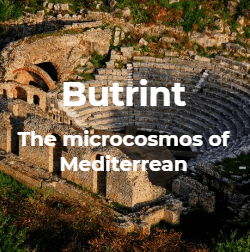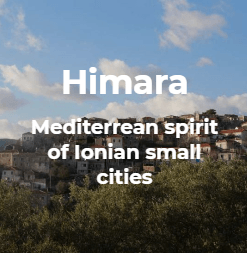The museum city of Gjirokastra was built on the eastern side of “Mali i Gjerë”. Since 2005, it has been in UNESCO World Heritage site.
The origin of the city starts with the castle of Gjirokastra, built in IV century AD. The city was named Argyrokastro, in 1336. In 1417, it was conquered by the Ottoman army. The city reached its peak over 1800-1830, when monumental assembly houses were built. The first neighborhoods are those of Bazaar and Hazmurate.
The main characteristic of Gjirokastra is the intensive use of stone in building the houses, which look like small fortresses, the streets of cobblestone, which all lead to Bazaar. You can also visit the Mosque of Bazaar here, built in 1557. Due to all these features, Gjirokastra is also known as the “The Stone City”.
The most important structure of the city is the castle, which is the biggest castle in Albania. Inside the castle, you can visit the Museum of Weapons,opened in 1971. Weapons from the prehistoric times up to the World War II are exhibited on here. The National Folk Festival has taken place in this castle during the years.
During your stay in Gjirokastra, you can visit the Ethnographic Museum, located in the house where the former communist dictator Enver Hoxha was born. This house (today a museum) is located in the Palorto quarter. You can also visit the house of Zekati family in Palorto, in a dominating position, which has undergone restoration. It is one of the most magnificent and characteristic buildings of Gjirokastra. Built in 1811-1812, it is a magnificent three-floor building and has two twin towers. A special feature of the house is the wooden carved ceilings and the characteristic guest room. From the wooden balcony in the third floor, you can enjoy an impressive view of Gjirokastra.Other important traditional buildings to visit are Angonati House , Babaramonewly restored house , Skendulaj house , Eqrem Cabej House under restoration , Kikino House and many others but also the statue of the main square dedicated to the patriot Cerciz Topulli and other important religious monuments of Bektashi sect and Orthodox religion .
One of the famous spotsto visit at Sokaku i te Marreve that means Mad People Street is also the reconstructed house of the famous Albanian writer Ismail Kadare
The town of Gjirokastra is also known for its culinary art; we can mention special dishes like pasha qofte, shapkat, oshaf with dried figs (a dessert with sheep`s milk, sugar and dried figs), etc.
In Gjirokastra you can visit interesting sites, part of the cultural heritage as well as natural wonders.
Antigonea
The archaeological park of Antigone is located near Saraqinishte village in the region of Lunxhëria, east of Gjirokastra. It is 14km away from Gjirokastra. The archeological park has a surface of 92 hectares.
Antigone was founded by King Pyrrhus of Epirus in 295 B.C., who named the town after his first wife, Antigone. At the end of 3rd century and the beginning of 2nd century BC, it grew into an important economic, cultural and political center and took the form of a state (polis).
It was surrounded by walls, 4,000 meters long. There are many attractions to be visited in the archaeological park Antigone such as: the mosaic, columns, promenade, an antique scale, the surrounding walls, etc. In the village of Labove e Kryqit, located near the small town of Libohova, you can visit one of the oldest and the most beautiful Byzantine churches in Albania, dedicated to St. Mary.
It is built in a style similar to that of Hagia Sophia in Istanbul. It was thought that the church used to have a relic, which is missing now. It was part of the cross where Christ was crucified.
Hadrianapolis
The ancient theatre of Hadrianapolis is located near the village of Sofratika, 14 km away from Gjirokastra, along the Gjirokastra – Kakavije (Greece) highway. The Hadrianopolis amphitheater was discovered by the Austrian archaeologist Prashniker. It dates back to the 2nd century B.C; it has a capacity of 4,000 seats and has 27 steps. Cajupi’s field lies in Lunxheria area, which is 1,310 meters above sea level; it is a flat area, which is used as climatic resort and surrounded by many sources of cold water.




















